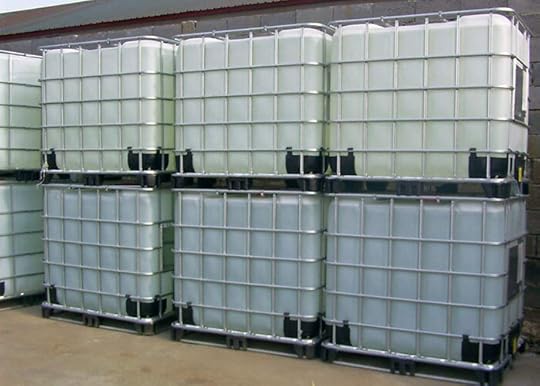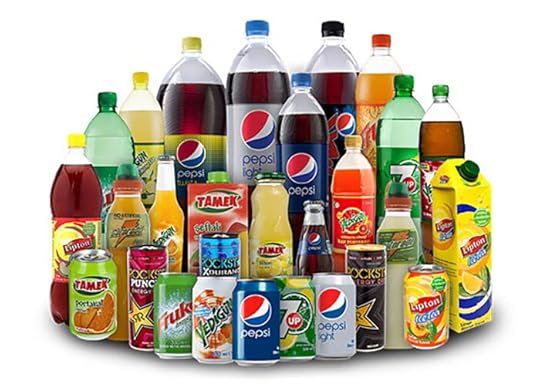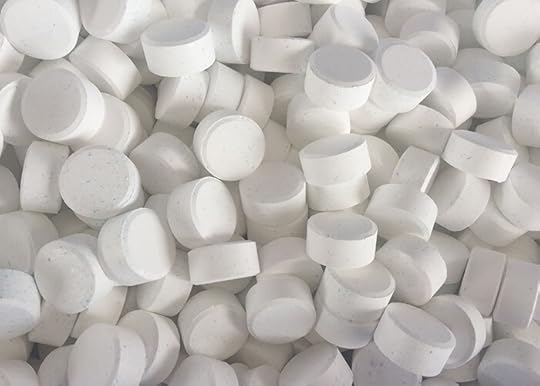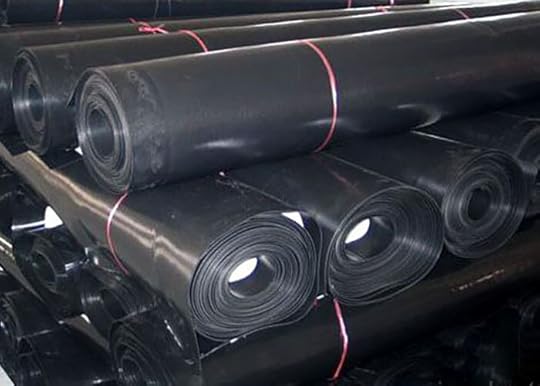Ripley Patton's Blog
August 30, 2023
Food Chemistry Unveiled: How Food Grade Phosphoric Acid Transforms
When it comes to culinary magic, it’s not just the ingredients that matter, it’s also the science behind them. In this gastronomic journey, we’re diving deep into the world of food chemistry, focusing our spotlight on a lesser-known hero – Food Grade Phosphoric Acid. Prepare to be amazed as we unravel how this unassuming ingredient works its transformative wonders in the realm of flavors.
The Flavor Magician: Introduction to Food Grade Phosphoric Acid
You might not have heard much about it, but Food Grade Phosphoric Acid is an unsung hero that has been shaping the taste of our favorite foods and beverages. This acid, commonly derived from minerals like phosphate rock, plays an essential role in elevating flavors, balancing acidity, and enhancing our culinary experiences.
Balancing Act: Acidity in Culinary Creations
Ever wonder what gives that tangy zing to your favorite soda or a perfectly balanced vinaigrette? Look no further than Food Grade Phosphoric Acid. Its acidity-enhancing properties make it a sought-after ingredient in the food and beverage industry. By adjusting pH levels, it not only preserves foods but also lends a delightful tartness that tickles our taste buds. This ingredient shines as a flavor enhancer, adding a well-balanced acidity that awakens our taste buds without overwhelming them. It’s the secret behind the signature taste of many beloved carbonated drinks and condiments.

Taste Amplifier: The Umami Connection
Umami, often referred to as the fifth taste, is what makes savory dishes deeply satisfying. Food Grade Phosphoric Acid works its magic here by intensifying the umami flavor in foods. From rich tomato sauces to savory broths, this acid heightens the taste complexity, making each bite an unforgettable experience.
Texture Transformation: Emulsification Expertise
Beyond its role in flavor enhancement, Food Grade Phosphoric Acid boasts impressive emulsifying abilities. This means it can blend oils and water-based ingredients seamlessly, giving rise to creamy textures in dressings, sauces, and even dairy products. Its presence turns a once-separated mixture into a harmonious concoction, pleasing both our palates and eyes.
Culinary Compatibility: A Versatile Ingredient
One of the most remarkable aspects of Food Grade Phosphoric Acid is its versatility. From carbonated beverages that sparkle on your tongue to the tenderizing marinades that make meats melt in your mouth, this acid adapts to various culinary applications effortlessly.
Preservation Partner: Extending Shelf Life
In the world of food production, extending the shelf life of products is a paramount concern. Food Grade Phosphoric Acid lends its hand here as well. Its antimicrobial properties help preserve foods and prevent spoilage, ensuring that our favorite treats stay fresher for longer. In fact, many food additives can prolong the shelf life, like SAPP 28, STPP, etc.
Choose High Purity and Quality Food Grade Phosphoric Acid
Impurity Sources: Addressing Potential Contaminants
Impurities in Food Grade Phosphoric Acid can arise from various sources, including the raw materials used in its production. Manufacturers take proactive measures to minimize these impurities by carefully selecting raw materials, implementing efficient extraction processes, and employing purification techniques.

Consumer Confidence: The Link Between Purity and Trust
The purity of Food Grade Phosphoric Acid is not just a technicality – it’s a reflection of the trust consumers place in the food industry. From carbonated beverages to processed foods, this acid plays a role in numerous products we enjoy daily. By maintaining unwavering purity standards, manufacturers ensure that the flavors and safety of these products are never compromised.
The Science Behind the Savor
As we bid adieu to this exploration of Food Grade Phosphoric Acid, let’s take a moment to appreciate the science that brings magic to our plates and glasses. The next time you savor a tangy sip of soda or relish the depth of flavors in your favorite savory dish, remember that food chemistry, embodied by ingredients like Food Grade Phosphoric Acid, is the unsung hero that transforms mere ingredients into unforgettable experiences. So, here’s to the science that tantalizes our taste buds and the culinary wonders yet to be unveiled! Get more details about phosphoric acid food grade from this website: https://chematephosphates.com/food-grade-phosphoric-acid/
The post Food Chemistry Unveiled: How Food Grade Phosphoric Acid Transforms appeared first on Ripley Patton's Blog.
June 28, 2023
How Trichloroisocyanuric Acid Revolutionizes Cleaning
When it comes to maintaining cleanliness and hygiene, the use of effective cleaning agents is paramount. Trichloroisocyanuric acid, often referred to as TCCA, has emerged as a revolutionary compound in the world of cleaning. With its powerful disinfection and sanitization properties, TCCA has transformed the way we approach various cleaning tasks.
Know About Trichloroisocyanuric AcidTrichloroisocyanuric acid is a chemical compound that belongs to the group of chloroisocyanurates. It is primarily used as a disinfectant, sanitizer, and algicide. TCCA is available in various forms such as tablets, granules, and powder, making it versatile and convenient for different cleaning applications.

Powerful Disinfection Properties
One of the key reasons why trichloroisocyanuric acid is highly regarded in the cleaning industry is its exceptional disinfection capabilities. TCCA releases chlorine when it comes into contact with water, effectively killing a wide range of bacteria, viruses, and other microorganisms. This property makes it a valuable asset in maintaining cleanliness in swimming pools, water treatment plants, and even household cleaning routines.
Versatility in Cleaning Applications
Trichloroisocyanuric acid finds extensive use across various cleaning domains due to its versatility. Its applications range from large-scale industrial settings to everyday household cleaning. TCCA is widely employed in swimming pools, spas, and hot tubs to ensure proper disinfection and water quality. Additionally, it is utilized in the food and beverage industry, healthcare facilities, and even in livestock farming to maintain sanitation standards.
Efficiency and Cost-effectiveness
In addition to its powerful cleaning properties, trichloroisocyanuric acid offers the advantages of efficiency and cost-effectiveness. Due to its high chlorine content, a relatively small amount of TCCA can go a long way in disinfection and sanitization. This makes it an economical choice for large-scale applications. Furthermore, chlorine tablets for pool has a long shelf life, providing extended usability and reducing the need for frequent replenishment.
Ease of Use and Storage
Another notable feature of trichloroisocyanuric acid is its ease of use and storage. It is available in convenient forms such as tablets or granules that can be easily dissolved or dispersed in water. This ensures hassle-free application and simplifies the cleaning process. Moreover, TCCA is stable and less prone to degradation, allowing for safe storage without the risk of hazardous chemical reactions.
The Power of TCCA in Pool MaintenanceWhen it comes to pool maintenance, trichloroisocyanuric acid has become a go-to choice for pool owners and professionals alike. Its primary function is to sanitize the water by effectively eliminating harmful bacteria, viruses, and other microorganisms. TCCA releases chlorine when dissolved in water, providing a potent disinfecting agent that keeps pools safe and hygienic. This versatile compound is available in different forms such as tablets, granules, or powder, making it convenient for various pool sizes and maintenance routines.
Algae Control and Prevention
In addition to its disinfection properties, trichloroisocyanuric acid is also highly effective in controlling and preventing algae growth in pools. Algae can quickly multiply and cause water discoloration, unpleasant odors, and even health hazards. By introducing TCCA into the pool water, the chlorine released helps inhibit algae growth, keeping the water clear, clean, and visually appealing.

Water Treatment Applications
Beyond pool maintenance, trichloroisocyanuric acid’s versatility extends to water treatment plants and facilities. In these settings, TCCA plays a critical role in ensuring the safety and quality of water for consumption and industrial use. Its strong disinfection capabilities make it an ideal choice for treating raw water, eliminating harmful pathogens, and reducing the risk of waterborne diseases. TCCA is particularly effective against bacteria, viruses, and protozoa, making it an essential component of water treatment processes worldwide.
Tips to NoteEnvironmental Considerations
While trichloroisocyanuric acid is a powerful cleaning agent, it is essential to consider its environmental impact. TCCA releases chlorine, which can be harmful to aquatic life if not properly managed. Therefore, it is crucial to follow recommended guidelines and dispose of TCCA waste responsibly to minimize any adverse effects on the environment.
Safety Considerations
While trichloroisocyanuric acid is highly effective in disinfection, it is important to handle it with proper care and adhere to safety guidelines. Direct contact with TCCA in its solid form may cause irritation to the skin and eyes. It is crucial to use appropriate personal protective equipment and follow recommended dosages to ensure safe and effective disinfection practices. Want to know more information, Visit FENGBAI Website for additional resources.
The post How Trichloroisocyanuric Acid Revolutionizes Cleaning appeared first on Ripley Patton's Blog.
May 30, 2023
Why We Use Polycarboxylate Ethers in Concrete
Polycarboxylate ethers (PCEs) are an essential component in modern concrete technology. They are a class of high-performance superplasticizers that significantly enhance the workability and performance of concrete mixtures. PCEs offer several advantages over traditional concrete admixtures, such as improved flowability, increased strength, reduced water content, and enhanced durability. In this article, we will explore the properties, benefits, and applications of polycarboxylate ethers in concrete.
 Polycarboxylate Ethers in ConcreteIntroduction to Polycarboxylate Ethers:
Polycarboxylate Ethers in ConcreteIntroduction to Polycarboxylate Ethers:Polycarboxylate ethers are organic polymers that consist of a main chain of polyethylene glycol (PEG) or polypropylene glycol (PPG) with side chains of carboxylic acid groups. These side chains are responsible for the remarkable water-reducing properties of PCEs. By dispersing cement particles and reducing the surface tension of water, PCEs enable the production of highly flowable and self-consolidating concrete mixtures.
Superior Water-Reducing EffectOne of the primary benefits of using polycarboxylate ethers is their excellent water-reducing effect. Compared to SNF based admixture, PCEs can significantly decrease the water-to-cement ratio in concrete mixtures while maintaining the desired workability. This reduction in water content not only improves the strength and durability of the hardened concrete but also reduces the permeability and enhances resistance to chemical attacks.
Improved Workability and FlowabilityPCEs greatly enhance the workability and flowability of concrete. Due to their unique molecular structure, PCEs effectively disperse cement particles, resulting in improved particle suspension and reduced internal friction within the mixture. This improved flowability allows for easier placement and compaction of concrete, even in congested reinforcement areas and complex formworks.
Increased Strength and DurabilityThe use of polycarboxylate ethers can lead to higher concrete strengths. By reducing the water content, PCEs facilitate better particle packing, resulting in denser and more compacted concrete. The enhanced particle dispersion and reduced water-to-cement ratio also contribute to improved hydration and curing, leading to higher compressive and flexural strengths. Furthermore, PCEs reduce the formation of capillary pores, making the concrete less permeable and more resistant to freeze-thaw cycles, chemical attacks, and other environmental factors.
Compatibility and VersatilityPolycarboxylate ethers are highly compatible with various types of cement, including ordinary Portland cement (OPC), blended cement, and supplementary cementitious materials (SCMs) such as fly ash, slag, and silica fume. Their versatile nature allows for their effective use in a wide range of concrete applications, including high-strength concrete, self-compacting concrete, precast concrete, ready-mix concrete, and shotcrete.
Environmental and Sustainability BenefitsThe use of polycarboxylate ethers can contribute to sustainable concrete production. By reducing the water content, PCEs decrease the cementitious material required in the mix, resulting in a lower carbon footprint associated with cement production. Additionally, the improved workability and flowability facilitated by PCEs can enable the use of more supplementary cementitious materials, which further reduces the environmental impact of concrete production.
Dosage and Compatibility ConsiderationsTo achieve optimal performance, it is crucial to determine the appropriate dosage of PCEs based on the specific concrete mixture requirements. The dosage depends on factors such as desired workability, cement type, temperature, and other admixtures present. It is also essential to ensure compatibility between PCEs and other concrete admixtures to avoid potential compatibility issues that may negatively affect the concrete’s performance.
In conclusion, polycarboxylate ethers have significantly improved the properties and performance of concrete. Their water-reducing effect, enhanced workability, increased strength, and improved durability make them invaluable tools in the construction industry. By enabling the production of high-quality, sustainable concrete, PCEs contribute to the creation of durable and environmentally friendly structures that meet the demands of modern construction projects.
The post Why We Use Polycarboxylate Ethers in Concrete appeared first on Ripley Patton's Blog.
May 26, 2023
How Linear Low Density Polyethylene (LLDPE) Is Building a Sustainable Future in Construction
In the world of construction, sustainability has become a key consideration. As the industry seeks greener alternatives, linear low density polyethylene (LLDPE) has emerged as a game-changer. Its unique properties and eco-friendly nature make it an ideal material for building a sustainable future.
Enhancing Energy Efficiency
LLDPE plays a crucial role in enhancing energy efficiency in construction. Its excellent insulation properties help reduce heat loss, making buildings more energy-efficient. By minimizing thermal conductivity, LLDPE acts as a barrier, preventing heat transfer and maintaining optimal temperatures inside structures. This translates into lower energy consumption and reduced carbon footprint.

Lightweight and Durable Construction
One of the standout qualities of LLDPE is its lightweight nature, making it a preferred choice in construction. Compared to traditional materials like concrete and steel, LLDPE offers a significant weight reduction without compromising on strength and durability. This not only eases transportation and installation but also minimizes the overall environmental impact by reducing resource consumption.
Sustainable Waterproofing Solutions
Waterproofing is a crucial aspect of construction, especially in areas prone to moisture and water damage. LLDPE excels in providing sustainable waterproofing solutions. Its impermeable and flexible properties make it an excellent choice for membranes and coatings. By effectively preventing water intrusion and moisture buildup, LLDPE helps prolong the lifespan of structures while reducing the need for repairs and maintenance.
Eco-Friendly Construction Materials
LLDPE is derived from Polyethylene PE, a thermoplastic polymer widely known for its recyclability. The recyclable nature of LLDPE allows for the development of sustainable construction materials. From eco-friendly pipes and conduits to roofing and insulation products, LLDPE-based materials are being utilized to reduce waste and promote a circular economy in the construction industry.
Reduced Environmental Footprint
By choosing LLDPE in construction projects, builders and architects can significantly reduce their environmental footprint. LLDPE’s production process generates lower greenhouse gas emissions compared to other materials, contributing to a more sustainable construction industry. Additionally, its recyclability minimizes the accumulation of waste in landfills, further enhancing its eco-friendly profile.
What Are Applications of LLDPE in ConstructionPiping Systems
LLDPE is widely used in the construction of piping systems due to its excellent durability, corrosion resistance, and flexibility. It is particularly suitable for underground water and gas distribution networks. LLDPE pipes offer a long service life, as they are highly resistant to chemicals, abrasion, and environmental stress cracking. Additionally, their flexibility allows for easier installation, reducing labor and material costs.
Roofing and Waterproofing Membranes
LLDPE-based roofing and waterproofing membranes have gained popularity in the construction industry. These membranes offer superior resistance to UV radiation, weathering, and water penetration. LLDPE’s flexibility enables efficient installation, ensuring seamless coverage and effective protection against leaks. Moreover, LLDPE membranes contribute to energy efficiency by providing excellent insulation and reducing heat transfer.

Protective Barriers and Linings
In construction projects that require protective barriers and linings, LLDPE is a reliable choice. It is widely used in applications such as landfill liners, secondary containment systems, and concrete protection. LLDPE’s chemical resistance, toughness, and ability to withstand harsh environmental conditions make it ideal for safeguarding structures and preventing contamination.
Insulation Materials
LLDPE is also utilized in the production of insulation materials for the construction industry. Its low thermal conductivity helps reduce heat loss or gain, enhancing energy efficiency in buildings. LLDPE insulation materials are commonly used for pipes, HVAC ducts, and building envelope applications. They contribute to maintaining comfortable indoor temperatures while minimizing energy consumption.
Construction Films and Sheetings
LLDPE films and sheetings find numerous applications in the construction sector. They are used for protective wrapping, temporary enclosures, vapor barriers, and moisture control. LLDPE films provide excellent tear resistance, flexibility, and UV stability. They are lightweight, cost-effective, and easy to handle, making them a preferred choice for construction site applications.
Linear Low Density Polyethylene (https://www.chemategroup.com/lldpe-linear-low-density-polyethylene/) has become an indispensable material in the construction industry. Its durability, flexibility, chemical resistance, and impermeability make it suitable for a wide range of applications, including piping systems, geomembranes, roofing and waterproofing, protective barriers, insulation, and construction films. By incorporating LLDPE into construction projects, builders and architects can ensure enhanced performance, durability, and sustainability. With its versatility and proven benefits, LLDPE continues to play a crucial role in advancing construction practices and contributing to the development of efficient and resilient structures.
The post How Linear Low Density Polyethylene (LLDPE) Is Building a Sustainable Future in Construction appeared first on Ripley Patton's Blog.
November 13, 2018
Ripley’s Editing Services
Tag Line Creation
Blurb Writing
Synopsis Writing
Pitch and Cover Letter Writing
Short Story Editing
Full Manuscript Edits (Both developmental and line edits in one pass).
Do you hate writing book description blurbs? Or synopses? Or tag lines? Or pitch letters to agents and publishers?
Well, you’re in luck, because I love writing that stuff. I know it can be hard to find an editor for the small projects. They’re all booked into next year and don’t really have the time to check out your newest short story. Plus, their turn-around times are months away, and you need that little edit now.
That’s where I come in. I love small edits, will give you a reasonable price, and I have a very fast turn-around time.
For as little as $30, you can have a shiny new blurb. Synopsis costs vary, depending on how much information you can give me. For $20, I’ll give you 3-4 tag lines to choose from. Cover/pitch letters are $35. Short stories are charged by length.
I also do full-length manuscript editing, specializing in comprehensive developmental edits. These edits focus on story line, plot arc, character development, and overall story consistency. I do in-line commentary as well as detailed e-mail explanations with my clients. I love having a back and forth with clients, incorporating their input into my edits. My goal is to make your story the best it can possibly be, but of course, you’re free to take or leave whatever edits I propose. I currently charge .005 cents a word and offer a FREE SAMPLE first chapter or 4,000 word edit (whichever is shorter), so we can see if we’re a good fit to work together. Simply fill out the interest form below and indicate you’d like the FREE SAMPLE EDIT.
Take a look at what authors are saying about my writing/editing services.
“I’m amazed at how Ripley picks the most important points and tightens my long-winded sentences without losing the story. I’m loving this new synopsis.” YA Author Lorraine M.L.M
From now on I’ll be coming to Ripley for blurb writing. Wow! I don’t know how she does it but this is amazing. I love my new blurb. – YA Author of the SeQuence Series, Lorraine M.L.M
Blurb writing is an art in itself and Ripley nailed it, creating a powerful and punchy book description that got to the heart of Rising Tides. She’s also a delight to work with and delivered VERY quickly. I’ll be back for more! – YA Author Katy Haye
The blurb Ripley wrote for my book is perfect and something that would have taken me hours of practice and frustration. – YA Author Yesenia Vargas
Ripley Patton just redid the blurbs for my first two books. Oh my gosh. She’s so good! – YA Author Constance Burris
I worked with Ripley to help me with book blurbs for several of my novels, and I am thrilled with what she came up with! She has a real gift for writing a blurb that catches the reader’s attention and totally sells the book! – Crime Thriller Author J.J. DiBenedetto
Ripley is a blurb writing genius! Her blurbs are short, sweet, to-the-point, and will entice readers. In other words, they are everything you want and more! I highly recommend her services! – Author Nicole Taylor
To schedule your editing appointment today, simply fill out the form below and I’ll get back to you soon with more info and an invoice.
Loading…









